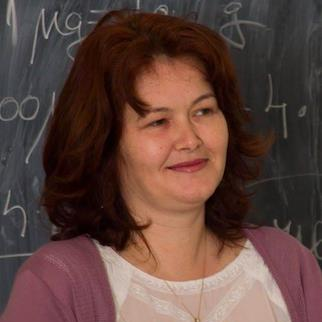Advances in Sustainability Research from the University of Oradea
A special issue of Sustainability (ISSN 2071-1050).
Deadline for manuscript submissions: closed (31 December 2023) | Viewed by 111596
Special Issue Editors
Interests: engineering; management; sustainability
Special Issues, Collections and Topics in MDPI journals
Interests: innovation; sustainability; entrepreneurship; energy economy; energy policy
Special Issues, Collections and Topics in MDPI journals
Interests: spatial planning and geotourism; natural and cultural heritage; geography of tourism
Special Issues, Collections and Topics in MDPI journals
Interests: sustainability in public health; occupational medicine; environment-associated diseases; sick building syndrome; one health
Special Issues, Collections and Topics in MDPI journals
2. Doctoral School of Biomedical Sciences, University of Oradea, 410087 Oradea, Romania
Interests: pharmacology; alternative therapies; biochemistry; public health; therapeutics; one health; sustainability in health; ecology
Special Issues, Collections and Topics in MDPI journals
Special Issue Information
Dear Colleagues,
Sustainability in all domains has constantly increased as a topic of major interest for scholars, policy makers and practitioners all over the world. Moreover, the quest for sustainability has been extended to various non-economic fields, including educational institutions and universities. The concept of “triple bottom line” has pointed out the three dimensions, i.e., economic, social and environmental, that must be considered in all human activities.
Sustainable development goes hand-in-hand with digitalization, innovation and performance, together creating the proper environment and conditions to ensure a more sustainability-driven, prosperous, fair and peaceful economy and society for the future. Approaching coherent strategies for sustainable development, relevant research directions and policies focused on the implementation of sustainability become a necessity. Considering the above, we suggest the following research directions:
- Connecting innovation/research activity with the major challenges of society (climate changes, demographic fluctuations, social inclusion, good quality of life, health, food and nutritional security, ecological energy, green building, technological changes, etc.);
- Dynamic economy;
- Sustainable business strategies, models and practices;
- Sustainability-oriented and transformative curriculum development;
- Industry based on a circular, clean economy, with the supply of raw materials ensured;
- Transition of the energy field towards climate resilience and neutrality;
- Behavioral transformations and education to reduce the climate footprint;
- Green, healthy agriculture;
- Biodiversity recovery, conservation and sustainable restoration of ecosystems;
- Access to innovative, sustainable and high-quality medical care.
This Special Issue welcomes all types of research devoted to investigating the complex nexus between education, research, innovation and sustainability.
Prof. Dr. Constantin Bungău
Prof. Dr. Alina Badulescu
Prof. Dr. Dorina Camelia Ilieș
Dr. Cosmin Mihai Vesa
Prof. Dr. Delia Mirela Tit
Guest Editors
Manuscript Submission Information
Manuscripts should be submitted online at www.mdpi.com by registering and logging in to this website. Once you are registered, click here to go to the submission form. Manuscripts can be submitted until the deadline. All submissions that pass pre-check are peer-reviewed. Accepted papers will be published continuously in the journal (as soon as accepted) and will be listed together on the special issue website. Research articles, review articles as well as short communications are invited. For planned papers, a title and short abstract (about 250 words) can be sent to the Editorial Office for assessment.
Submitted manuscripts should not have been published previously, nor be under consideration for publication elsewhere (except conference proceedings papers). All manuscripts are thoroughly refereed through a single-blind peer-review process. A guide for authors and other relevant information for submission of manuscripts is available on the Instructions for Authors page. Sustainability is an international peer-reviewed open access semimonthly journal published by MDPI.
Please visit the Instructions for Authors page before submitting a manuscript. The Article Processing Charge (APC) for publication in this open access journal is 2400 CHF (Swiss Francs). Submitted papers should be well formatted and use good English. Authors may use MDPI's English editing service prior to publication or during author revisions.
Keywords
- sustainable development
- research in sustainability
- sustainability in production
- sustainable business strategies, models and practices
- sustainability in services
- sustainability in education
- sustainability in management
- one health concept
- sustainability in constructions
- sustainability in tourism, territorial planning, heritage and arts
Benefits of Publishing in a Special Issue
- Ease of navigation: Grouping papers by topic helps scholars navigate broad scope journals more efficiently.
- Greater discoverability: Special Issues support the reach and impact of scientific research. Articles in Special Issues are more discoverable and cited more frequently.
- Expansion of research network: Special Issues facilitate connections among authors, fostering scientific collaborations.
- External promotion: Articles in Special Issues are often promoted through the journal's social media, increasing their visibility.
- Reprint: MDPI Books provides the opportunity to republish successful Special Issues in book format, both online and in print.
Further information on MDPI's Special Issue policies can be found here.










